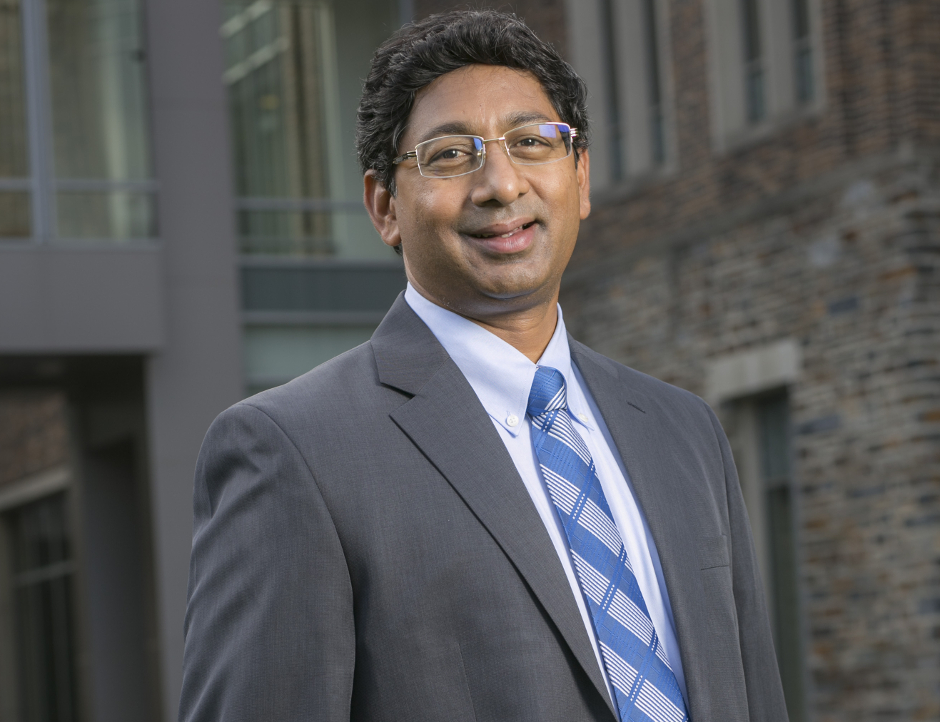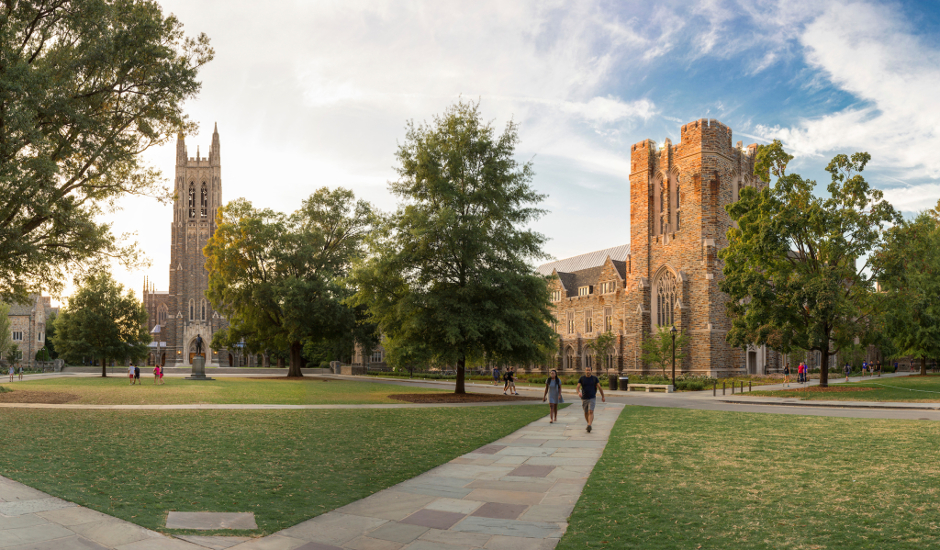
Endowed in 1924 by James Buchanan Duke, the university that bears his family’s name boasts a myriad of notable former students, including aforementioned physics and chemistry laureates, plus seven current members of US Congress.
Younger still is Duke University’s Pratt School of Engineering, which was formed in 1939 but reflects former Duke president Terry Sanford’s call for ‘outrageous ambitions’ when he urged everyone at Duke to pursue ‘an unrelenting search for excellence’ in 1984.
Pratt School of Engineering is one of two undergraduate schools of Duke University, and one of seven graduate and professional schools. A third of its undergraduates are female compared to the national average of 22 per cent, and nearly 70 per cent of senior students find employment by the time they graduate compared to 59 per cent nationally. It is estimated that Pratt graduates earn an average salary of $75,100 in their first five years of employment.
Made up of four engineering departments – biomedical, civil and environmental, electrical and computing, and mechanical and material science – the faculty has witnessed 15 per cent growth over the past five years and overseen the creation of 35 spin-off companies, seven of which emerged in the past year.
Former Pratt Dean Tom Katsouleas had been pivotal — along with Yannis Yortsos, Dean of the University of Southern California’s Viterbi School of Engineering, and Richard Miller, president of the Franklin W. Olin College of Engineering — in establishing a programme that would see 122 schools pledge to graduate at least 20 engineering students per year who’d been ‘expressly equipped’ to address Grand Challenges identified by initiatives including the White House Strategy for American Innovation and the US National Academy of Engineering’s 14 Grand Challenges for engineering.

Training Grand Challenge scholars would require a new way of teaching that went beyond the engineering fundamentals taught in the classroom and in January 2016 a new dean was announced at Pratt who was determined to ‘flip the curriculum’ and focus freshman minds on developing problem solving skills.
“There aren’t many schools in the world doing what I’m trying to do,” said renowned biomedical engineer Prof. Ravi V. Bellamkonda, Vinik Dean of the Pratt School of Engineering.
For Bellamkonda, engineering education has not changed fundamentally in the past 30 years, a situation he describes as ‘ridiculous’ given the pace of technological advance.
“The impact of technology is creeping into areas that we wouldn’t traditionally think of,” he said. “The question is: where is the next large company going to come from? And are we preparing students who think…in terms of big societal problems and solving them? Or are we preparing students to get jobs that are technical in nature that need doing?
“If your ambition is to supply the jobs that we know exist then fine, we do a great job [at Duke]. If your ambition is to invent a new world through the use of technology, then I suspect we’re not preparing the engineers we need.”
Bellamkonda wants to instil what he describes as ‘habits of a Duke engineer’ and is setting about this with an eponymous pilot program based around design, data, and computing. A strong seam of analytical and quantitative skills will still run through the core of Pratt undergraduates but this will be complimented with teamwork — using written and oral communication skills — to solve problems in an ethical manner. While these might not appear to be traditional engineering skills, Bellamkonda suggests they are critical for the future engineer. The three new classes, set to be mandatory for all Duke engineers once pilot programmes are complete, will be taught with assignments to solve problems supplied by industry partners.
“The students work in teams — not of their choosing — where we balance gender, origin and things like this, and they have a product to deliver,” said Bellamkonda.
The design element has been set up to develop what Bellamkonda calls ‘design thinking’, which starts with identifying a problem and accurately defining it.
“Whenever you run into any problem, there is a temptation to reach into our experiences — whatever those are — and try to find a solution. That is an instinct that is natural to all of us,” he said. “The design thinking process says, pause on that. It may well be true that that’s the solution, but let’s see if we understand the problem correctly. Having defined it, do you and I agree as a team that this is actually the problem? Once we agree to that then you’ll make a list of all the possible solutions. Then…you make a table that assigns value of what you’re trying to optimise for. Is it cost? Is it the time to solution? So you can make a list of things and you assign weights. The whole idea is to instil this habit of when you run into a complex problem without a clear solution…how do you actually deal with that? There’s a structured way to deal with [it] that we think of as ‘design thinking’”.

The computing element has been introduced to demystify the subject and help eradicate negative perceptions that might prejudice students against pursuing an interest in IT. Bellamkonda sees this as a severe problem in the US, given the monumental changes and opportunities brought about by computing. He also sees huge variability in the computing skills of students and wants to bring about equilibrium so that the brightest people can sample ‘computational thinking’ regardless of their competence when they first enrol.
“So the purpose of this introductory computational experience is really to give them a sense for the kind of problems they might want to take on,” said Bellamkonda.
Data science might be relatively new but Bellamkonda says he is betting that it will be a core requirement for all future engineers who will, in his opinion, need to be comfortable with large data sets and the appropriate methods for dealing with them.
“The idea of comprehensively making the first year experience about what real problems are like — that have meaning and purpose, and are not made up — I think is a powerful one,” he said.
The pilot phase of Bellamkonda’s tenure saw 50 students enrol in each class and, on a wider level, facilities exist for students to nurture their entrepreneurial aspirations. Underpinning his vision is a desire to retain and encourage students by reversing the current practise of teaching fundamentals in the first two years of university. For Bellamkonda, this is nothing more than a way of ‘weeding out’ students, a harmful precedent in an age that he says requires ‘more people to be savvy in engineering and technical skills’.
“Because our students do well already…its natural for some to ask ‘why are you tinkering with something that’s not broken?’ said Bellamkonda. His colleague, Stephen D Bayer, associate vice president, office of university development at Duke, said the University’s relative youth puts it in a position to be more adaptable.
“While the University has been around for decades it’s still a lot younger than a lot of its peers,” said Bayer. “What comes with that is a greater sense of innovation and entrepreneurial spirit and I think it manifests itself pretty well. We try things at Duke and if it doesn’t work its ok, there’s not a nervousness to make change.”
In its Class of 2020 Profile, the university, situated in Durham, North Carolina, shows a total of 7,660 applications to Pratt with a 10 per cent acceptance rate. Bellamkonda acknowledges that student numbers are not an issue.
“They come to Duke because they want to go to Duke University, not because of the engineering curriculum,” he said. “That is the truth today, and I’m going to change that. That’s the first part, to give us an identity of sorts. What happens as a consequence of that? We’ll wait and see.”
Biography
B.Eng. in biomedical engineering, College of Engineering, Osmania University (India)
Ph.D. in medical science and biomaterials, Brown University
Research focus: Neurological biomaterials and cancer therapeutics
Selected honors: Clemson Award for Applied Research (Society for Biomaterials), EUREKA award (National Cancer Institute), CAREER award (National Science Foundation), and best professor award (Georgia Tech BME students)




Project to investigate hybrid approach to titanium manufacturing
What is this a hybrid of? Superplastic forming tends to be performed slowly as otherwise the behaviour is the hot creep that typifies hot...